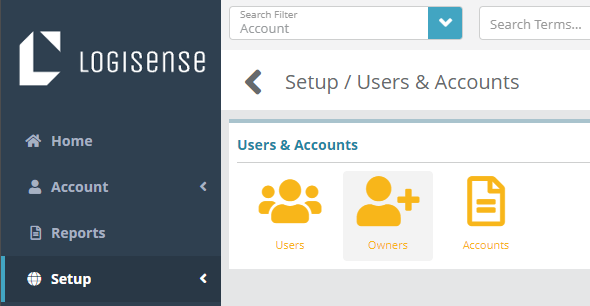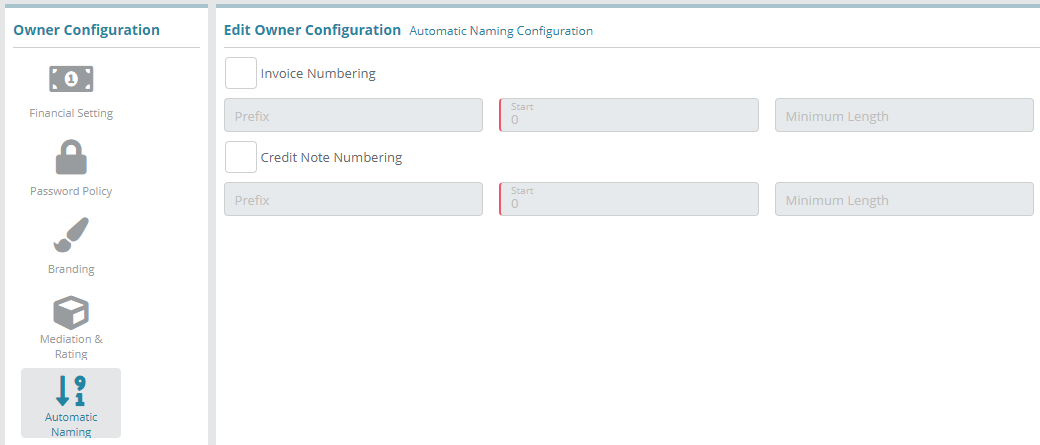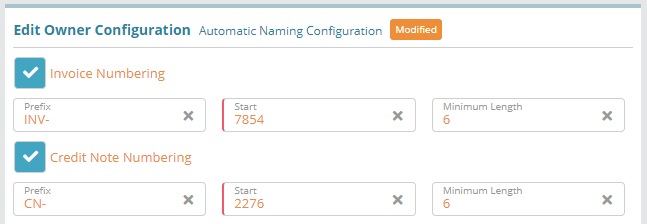Summary
Automatic naming settings allow you to configure custom invoice and credit note naming/numbering schemes.
Automatic naming schemes are useful when migrating from another billing system. Invoice numbers and/or credit note numbers can be setup to resume from the last invoice number or credit note number issued in the previous billing system.
...
For additional details on the fields presented on this screen see the Owner Configuration Screen screen help guide.
Prerequisites
Automatic naming can be setup immediately, there are no prerequisite configuration steps
Sample Configuration
Log into the LogiSense Billing application
Click on the Setup menu, User Users & Accounts and then Owners
On the owner screen that loads click on the Automatic Naming tab on the left
Check off the Invoice Numbering and Credit Note Numbering options to enable custom numbering schemes. An example configuration in the image below shows that invoices will be prefixed with ‘INV-’ and start at 7854 with a six character numerical length (the length will add leading zeros to the invoice number). This configuration will result in the first invoice generated on an account being prefixed and numbered as ‘INV-007854’
Click Save to commit your numbering scheme changes
Result
Generating an invoice on an account will result in the numbering scheme being observed.
...
Next on the invoices screen the invoice will be created observing the previously configured Prefix (INV-), Start value (7854) and invoice number length (6).
...
Next Steps
Owner Configuration Optional Steps:
Optional: if you need to translate product names on invoices you can configure translations on locales now or at a later time. See the Locales Configuration Example for a sample configuration
Optional: if you wish to define custom payment types you can do so now or at a later date. See the Payment Types Configuration Example for instructions on how to add a payment type
Optional: if you need to integrate the LogiSense Billing application with an external payment gateway you can do so now or at a later time. See the Payment Gateway Configuration Example for instructions on how to configure a gateway
SMTP Settings Optional Steps:
Optional: SMTP settings allow the system to send emails. New users cannot be emailed with a link to setup their passwords until SMTP settings are configured. This step does not need to be completed until you are ready to setup new users. See the SMTP Settings Configuration Example for instructions on how to setup and test SMTP Settings
Users and Roles Optional Steps:
Optional: Users and roles define who can access the system and what they can access. See the Role Group Configuration Example article as a starting point for setting up users and roles
Account Settings Required Steps:
Account types, statuses and contacts need to be configured before proceeding to other required steps. See the Account Types Configuration Example article to start setting up the required account settings



